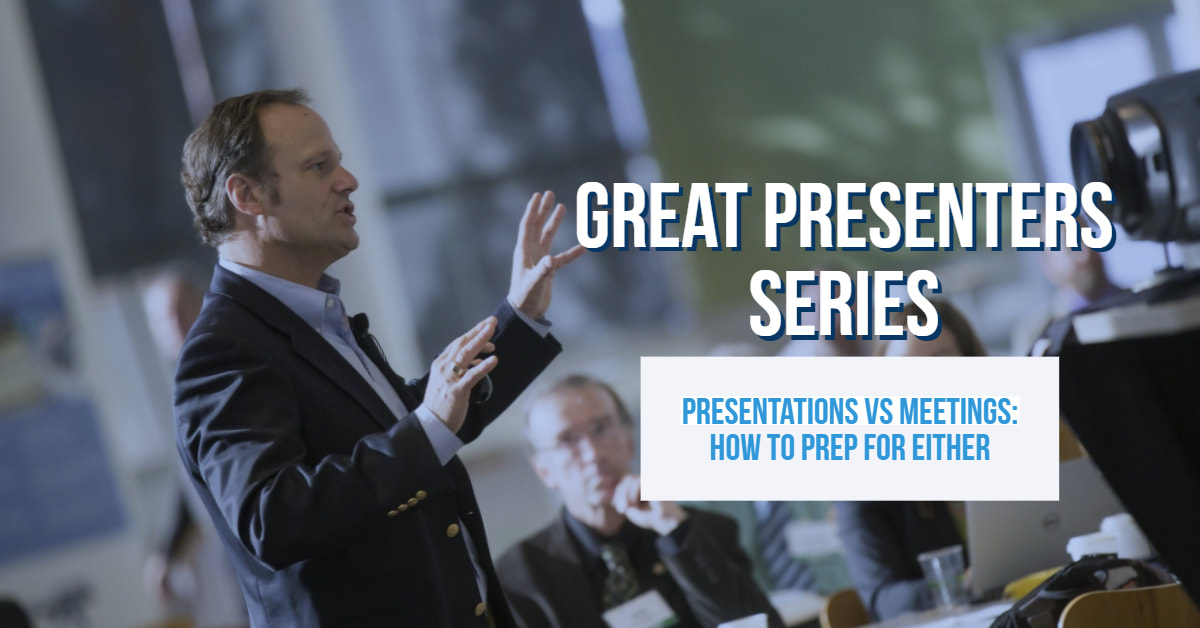|
In a recent class a client asked about the differences between techniques that can be used for a formal presentation versus a conversational meeting. It’s a good question, because while there is a lot of overlap there are differences.
Most meetings and presentations follow a 3-act structure. This structure is what you see in most hit movies, intro - confrontation/conflict - resolution. You meet the characters and learn about their motivations, there is some motivation that sets the hero or heroes into a battle or challenge, then a moment or change that drives the hero to the final confrontation and the ending. In Star Wars, you meet Luke, C3PO, R2D2, Princess Leia, Darth Vader and a few others, during the first act. Luke sees the burned out remains of his Uncle and Aunt’s farm and we’re on to the second act where Luke matures into a young Jedi. Once Leia is rescued and Luke sees Ben “killed” by Vader the final resolution starts as the attack on the Death Star is planned. This isn’t very different than a business presentation or meeting. Well except for the blasters, robots, space stations and a few other details. The core is the same whether you’re involved in a formal meeting or status review. Act 1: The Introduction In a formal presentation that is more of a 1-side speech than interactive you need to capture your audience's attention with a hook. Why should they listen? Are you an authority on a subject? Does it relate to the audience well? Is the audience going to learn something personally relevant or compelling? Are you giving the audience a structure they can follow, or something that is so intriguing that they are on the edge of their seat to learn the next twist of the story? One thing is to make sure that it’s clear what will be covered by the end of the session. “You will learn why you should consider getting rid of every copier in your office in 45 minutes” or something similar. Give them a clear understand of what you want the audience to learn or what viewpoint you will share and potentially convince them of the validity of your argument. In a status meeting it’s often more about giving attendees a structure that they can follow. That helps for two reasons; the first is for the multi-taskers in the room, and you know who you are, will then at least know when to switch their full attention back to the meeting. For those that are involved from beginning to end, they have a “story” to follow, even if that story is simply where the project is, what challenges came up last week, and then what the next steps are going to be. Act 2: The Confrontation For the formal presentation the confrontation is usually your argument or body or the topic. If your set up was why athletic wear should be made in the US versus abroad, this is where you lay out your reasons why it makes sense. In a more interactive meeting information is still presented, but the conflict hopefully is clarifying questions, new ideas and problem solving. The goal is to control the meeting so that this section aligns to cover the agenda and goals you’ve defined in your intro. Act 3: The Resolution You’re in control with a formal presentation. You can build your argument until your moment of truth, and then hit the summation with a twist, a wall of momentum, or a simple re-listing of your originally stated goals. It’s all up to you. But, make sure you hit it with conviction. You are sharing a truth, even if you think you’re approach is just an option for your audience. Show the passion of why your viewpoint is vital for the audience to consider, implement or carry forth to the world. If you’re hosting your weekly status meeting you might not be destroying the Death Star every week. But you are celebrating progress or overcoming obstacles. It’s your job to keep driving progress forward. Celebrate your victories, build your strategy for challenges and share the plan for the next week. Hold people accountable for wins and losses and get them to sign up for the next leg of the project. Drive your momentum with certainty and conviction. Beginning, middle and end. Every good story has them. Whether you’re standing on a stage in front of 1,000 strangers at a conference, or sitting with your team with a couple of people from your client on a conference call.It’s not that different. Start with the ending and know what you want to accomplish. Use the three act structure and lead them. Leadership is what a good structure shows, and that is the same for presentations or meetings.
0 Comments
Leave a Reply. |
Categories
All
Robert MattsonRobert is a speaker coach, actor, director, author, speaker, executive and overall marketing guy. He writes about all aspects of presenting and connecting with audiences. Archives
April 2019
|




 RSS Feed
RSS Feed